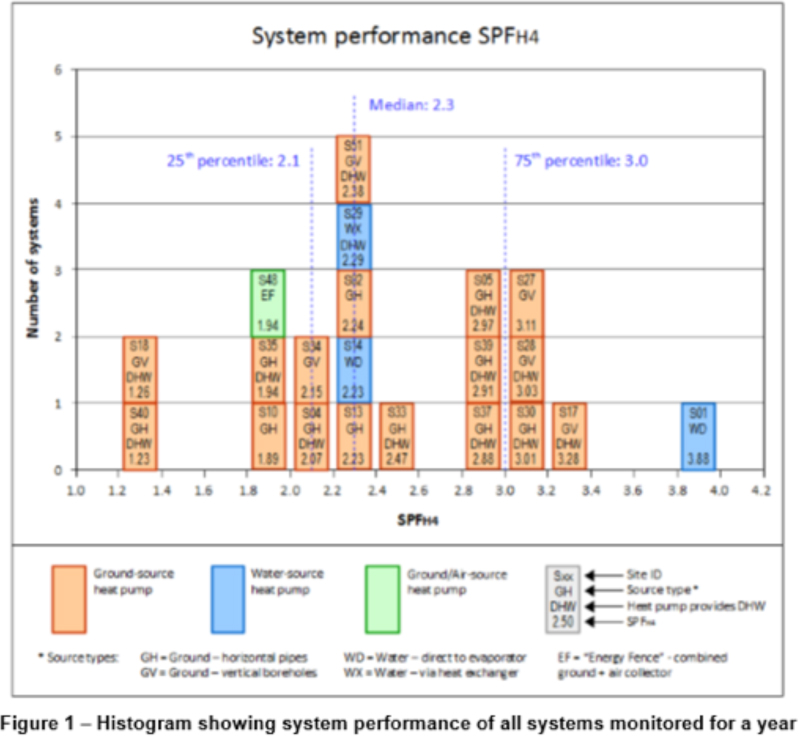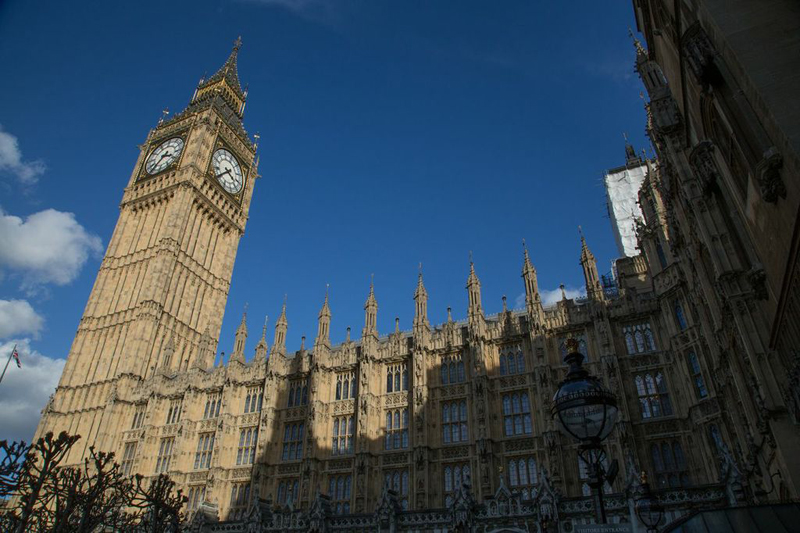
Blog Archive
Latest Blog Posts
Heatpump Efficiencies
The first ever Renewable Heat Incentive accredited system was a 26kw water source heatpump which heated a 750m² office development in Yorkshire.
A report published by the Department of Energy and Climate change on 11th February 2016 showed that it was also the most efficient of those monitored by an independent consultant.
The one year study which looked at both the efficiency of the heatpump, and the efficiency of the whole heating system revealed that the system installed by Earthtest Energy for Booth Brothers (Printers) Ltd was a huge 70% more efficient than the mean performance of the other systems monitored, and beat its nearest rival by 20%.
The report concluded “that it is possible to design, install and operate heat pump systems that provide a high seasonal performance factor, but that this high level of performance is not being realised on some installations”.
Renewable Heat Incentive for heatpumps
Following the Chancellor’s autumn statement when he reaffirmed the financial support for RHI payments, DECC have announced further reductions in the payments for new biomass installations commissioned after 31st December 2015.
The DECC section of the GOV.UK website publishes information on the RHI and other matters.
Degression of Commercial RHI for biomass
DECC has adopted a mechanism for budget management of RHI payments which involves “degression” of tariff rates for technologies that are absorbing more cash from the RHI budget than DECC had envisaged. This has led to various degressions of the RHI tariffs for biomass boilers.
• The first degression was a 5% reduction in the tariff for medium biomass from 1 July 2013.
• The second degression was a 5% reduction in the tariff for small biomass from 1 July 2014.
• The third degression was a 10% reduction in the tariff for small biomass from 1 October 2014.
• The fourth degression was a 10% reduction in the tariff for small biomass from 1 January 2015.
• The fifth degression was a 15% reduction in the tariff for small biomass from 1 April 2015.
• The sixth degression was a 25% reduction in the tariff for small biomass from 1 July 2015.
• The seventh degression is a 5% reduction in the tariff for small biomass from 1 October 2015.
• The eighth degression is a 10% reduction in the tariff for small biomass from 1 January 2016.
• Following the current pattern, a further fall in the tariff for small biomass is predicted from 1 April 2016.
DECC’s policy for degression is explained here.
The Quarterly Forecast October 2015 announced degression from 4.18p to 3.76p for the tariff for small biomass boilers, with effect from 1 January 2016.
There is no risk of degression for RHI Tariffs for GSHPs
None of the other technologies are at risk of degression as the uptake of GSHPs and solar thermal panels is only a small fraction of what DECC had anticipated.
The tariff for GSHP at 8.84p is now more than twice that for small biomass.
Summary of changes to the non-dom RHI
RHI & RH-PP Deployment Data from DECC
Degression of Domestic RHI for biomass
• The first Domestic RHI degression was a 10% reduction in the tariff for biomass from 12.2p to 10.98p from 1 January 2015.
• The second was a 20% reduction in the tariff for biomass from 10.98p to 8.93p from 1 April 2015.
• The third was a 20% reduction in the tariff for biomass from 8.93 to 7.14p from 1 July 2015.
• The fourth was a 10% reduction in the biomass tariff from 7.14 to 6.43p from 1 October 2015.
• The fifth is a 10% reduction in the biomass tariff from 6.43 to 5.14p from 1 January 2016.
• None of the other technologies are at risk of degression as the uptake of GSHPs and solar thermal panels is only a small fraction of what DECC had anticipated.
The tariff for GSHP at 19.1p is now more than three times that for biomass.
This, together with the continuing high cost of biomass pellets makes heatpumps the optimal green solution for heating homes and businesses.
Green Deal or No Deal – Earthtest Energy speaks at House of Commons
I am from Earthtest Energy and I am here to talk about the Renewable Heat Incentive. The reason I was invited is because Earthtest Energy achieved the first ever Renewable Heat Incentive accreditation – regardless of technology. This was in January 2012 for a heatpump serving an office in a converted Corn Mill.
The objective of the Renewable Heat Incentive is to incentivise individuals and companies to choose Renewable energy rather than fossil fuels to heat homes and businesses. This is achieved by compensating the owners for the cost and inconvenience of this decision, and also to provide good rate of return on the capital expensed. It is similar in concept to the feed in tariffs for photo voltaic panels and wind turbines.
Unfortunately the original Non Domestic Renewable Heat Incentive was hastily conceived, and particularly for ground source heatpumps – our speciality – there were a number of issues regarding the rules, which took almost a year to resolve. These problems are now behind us, and with the doubling of tariffs for schemes accredited since January 2013 and the removal of the 100kw barrier, the Non Domestic Renewable Heat Incentive is now really open for business.
The Domestic Renewable Heat Incentive has been delayed and delayed. Interim Premium Payments did little to encourage uptake and caused considerable suspicion in the market. The delays are understandable, it is a complicated scheme, and it is difficult to draft rules to suit very differing technologies. But we are assured it will happen in the Spring and even the rain gods and the government cannot stretch Spring beyond the end of May. The only remaining obstacle is the interface with the Green Deal Energy Assessment, which is used to calculate the amount of heat needed and thus the magnitude of the tariff payments.
We, at Earthtest Energy, are geologists. We supply ground source pumps, and to make certain of their efficiency, we include underfloor heating and mechanical ventilation with heat recovery within our scope of supply. We also have a thorough understanding of the Renewable Heat Incentive rules. We do not try to cover all the other renewable products.
So what does renewable ground source heat mean for property owners?
Most importantly, heating bills for a heatpump are less than half the cost of oil, and this is an ongoing saving.
Thereafter it gets more complicated, and correct design of the heatpump and its interface with the building are essential.
The Non Domestic Renewable Heat Incentive is paid against metered heatpump output and has tiered payments.
The Domestic Renewable Heat Incentive is paid against deemed heatpump output, existing properties require a Green Deal Assessment, and the Domestic Renewable Heat Incentive is paid only for the renewable element of the heatpump output. Are you confused? – well talk to me later!
However everyone wants numbers, so here they are.
A Non Domestic 50kw heatpump could earn payments of £125,000 plus inflation over 20years.
A Domestic 12kw heatpump could earn payments of £29,000 plus inflation over 7years.
These are big numbers, but as the uptake of the scheme increases, they are likely to reduce.
RHI Domestic is now available
Non Domestic Renewable Heat Incentive payments are already being paid and will double following the recent review.
Earthtest Energy secured the first ever Renewable Heat Incentive Accreditation from Ofgem for installation of a Ground Source Heat Pump system to heat an office conversion.
Under the Early Tariff Review published in May 2013 and ratified in December 2013, new systems accredited since 21st January 2013 will receive tariff payments of 8.7 pence per kilowatt hour for the first 15% of heatpump utilisation and 2.6 pence per kilowatt hour thereafter. Payments will made against metered heatpump output, will be inflation linked and will continue for twenty years. These new tariffs will apply to all heatpumps regardless of capacity. A 50kw heatpump can earn £125,000 in tariff payments.
Eligibility
In addition to commercial and retail properties, domestic properties which share a heatpump system will be eligible for the Non Domestic RHI. So a house with a granny flat would be eligible, as would a housing development drawing heat from a single borehole. The new tariffs will also apply to schemes larger than 100kw.
Earthtest Energy
The rules for Non Domestic RHI are complex, talk to us about your project and we will propose the most cost effective solution.
Earthtest Energy is at Grand Designs Live 2013
Earthtest Energy will be exhibiting at the Grand Designs Exhibition at the NEC from 4th to 6th October.
On the stand will be an open loop heatpump, and we will be distributing our summary of the Renewable Heat Incentive rules. We hope to meet many existing and new customers.
Come and visit us on stand B59.
Earthtest Energy’s ground source heat gets royal approval by HRH Prince Edward
 Bullhouse Mill the first commercial project in the UK to be awarded the renewable heat incentive (RHI) by the government was visited by HRH Prince Edward.
Bullhouse Mill the first commercial project in the UK to be awarded the renewable heat incentive (RHI) by the government was visited by HRH Prince Edward.
Booth Brothers Printing in South Yorkshire entered the history books by becoming the first place in the UK to get the government’s Renewable Heat Incentive in 2012. Its offices, housed in an 18th century former corn mill in Penistone, is kept warm through an underfloor heating system powered by a renewable energy heat pump.
The 24kW system was installed by Earthtest Energy, and will generate an inflation linked RHI payment of £2,600 per annum for twenty years.
The installation is part of a zero carbon office complex in a converted corn mill and incorporates underfloor heating and mechanical ventilation with heat recovery, which was also installed by Earthtest Energy.
Prince Edward was taken on a tour of the mill to see how the ground breaking ground source heat system works. He commented that he approved and was very impressed with the system.
Domestic Renewable Heat Incentive opens for applications Spring 2014
 On the 12th July 2013, the Department of Energy and Climate Change published the final policy for the Domestic Renewable Heat Incentive. The scheme will open for applications in the Spring of 2014. The tariff payments for ground source heatpumps will be 18.8 pence for each kilowatt hour of renewable heat generated. The scheme will pay out for seven years.
On the 12th July 2013, the Department of Energy and Climate Change published the final policy for the Domestic Renewable Heat Incentive. The scheme will open for applications in the Spring of 2014. The tariff payments for ground source heatpumps will be 18.8 pence for each kilowatt hour of renewable heat generated. The scheme will pay out for seven years.
Eligibility
Existing residential properties and new self build properties will be eligible. Second houses and holiday homes will be paid against metered heat outputs, whilst other properties will be paid against the deemed heat usage based upon an Energy Performance Certificate for the property. For existing properties, there will be a precondition that a Green Deal Assessment is undertaken and insulation levels in the roof and the cavity walls are brought up to economic levels. Green Deal Loans will be available to assist with the expenditure.
Systems which have been installed since July 2009 will be eligible, but must be registered by 22nd October 2013.
Payments
The tariff payment for ground source heatpumps will be 18.8 pence per kilowatt hour of renewable heat generated, for a period of 7 years. The consumption will be calculated on a deemed basis, and will use the figure taken on the Energy Performance Certificate.
The main difference from the Non Domestic scheme and all previous consultations is the payment is only for renewable heat; that is the electricity consumption of the heatpump and the borehole pump are deducted from the heat output generated.
This further emphasises the importance of getting heat out of the ground at the highest possible temperature and delivering it into the house at the lowest possible temperature thus maximising heatpump efficiency and minimising electricity consumption.
It is expected that Heat Emitter Guide produced by DECC and others will be used to estimate the electrical consumption of the system and thus the RHI Payments.
To read full information please click here to download a pdf of our brochure.
Renewable Heat Incentive Consultation for domestic scheme
Earthtest Energy is a sister company of Ashton Bennett Limited, which for the last 25 years have provided geological, geotechnical and environmental consultancy services to the construction industry, home owners and businesses. Earthtest Energy have been supplying ground source heat pumps together with the associated heating delivery systems since 2008. Earthtest Energy secured the first ever Non Domestic Renewable accreditation for our customer – Booth Brothers (Printers) Ltd.
Domestic Renewable Heat Incentive
The Government issued a consultation proposal on the 20th September. It contains a number of differing ideas about how the Domestic Renewable Heat Incentive Tariffs will be calculated.
Heat scheme hots up
Umbrella company and holiday cottages are first two successful applicants to low carbon heating incentive.













